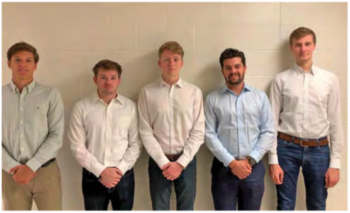One goal of the MSU Mechanical Engineering Program is to educate engineers who are prepared to lead, create, and innovate as their professional or graduate careers evolve. The Mechanical Engineering Design Program is the key element of the curriculum that supports this goal. There are five required design courses in the program which provide our students with eight hands-on, team-based, ‘design, test and build’ projects, and numerous opportunities to practice and refine their written, oral, poster, and video presentation skills. The Design Program in Mechanical Engineering has attracted national recognition on many occasions and helps to distinguish the ME program as one of the best in the country.
For information on becoming a project sponsor, please contact Jim Lang.
The following were the project sponsors and projects for Fall 2019:
Michigan AgrAbility: Automatic Gate Opener

The vision of AgrAbility is to enhance the quality of life for farmers, ranchers, and other agricultural workers with disabilities, so that they, their families, and their communities continue to succeed in rural America. Farm gates leading to animal pens and pastures must be opened multiple times per day. Farmers with leg injuries, arthritis, or other disabilities can have significant difficulty climbing on and off a tractor several times to open gates. Often, animals may get outside the gate during this process as well, prolonging farm tasks. This could be made significantly less strenuous if farmers could instead open them from the comfort and safety of their tractor seats.
Our team focused on designing and manufacturing an automatic gate opening system that can easily be installed on a wide variety of gates that can be used by agricultural workers across Michigan and the United States. The gate opener consists of an actuator connected to the gate operated by a button-push similar to a garage door opener. The final product has strong product viability due to its low cost, component accessibility, and ease of installation relative to market competitors.
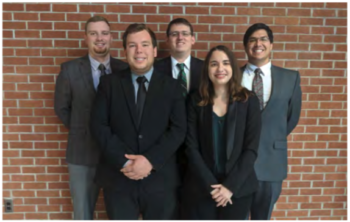
Heartwood School/Ingham ISD: Adapt-A-Step

Heartwood School, located in Ingham County, serves ages 2 1⁄2 to 26 year olds with moderate to severe cognitive impairments and severe physical impairments. Many of the younger students have not developed the ability to walk up and down the bus steps when they start school. As these students get stronger, they need to be able to practice climbing stairs several times before they can safely climb independently. This is a difficult process for the students from a cognitive and physical standpoint. Obstacles these students face are ascending the initial bus step, descending the initial bus step, and having a safe hand hold while ascending and descending the bus steps.
Our team has been asked to create a device that will help these students access these steps safely. The device utilizes an adaptable step system that will reduce the height of the first bus step to the ground. This device also incorporates a rail system that assists the students with stability when they climb up the stairs. This device must withstand a safe load, be easy to set up, and must be safe for the students to use.
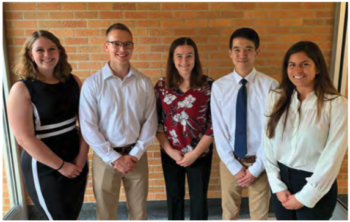
Heartwood School/Ingham ISD: Bus Safe Climbing System

Heartwood School in Ingham County helps students with moderate to severe cognitive impairments and severe physical impairments. These impairments require the students to have close supervision at all times during mobility activities. The school’s physical therapists and teaching staff are often putting themselves at risk for injury while helping to prevent students from falling when the students are navigating the bus stairs. The staff at Heartwood currently assists students from the top and bottom of the bus steps. These positions are not ideal because they require the caregivers to work in unfavorable ergonomic positions that put them at risk for injury. In addition, the current loading/unloading procedure is not ideal for the students because they are often given a large amount of assistance while being rushed up/down the steps, which takes away their ability to learn to navigate the stairs on their own to become independent in gross motor skills. The proposed bus climbing system would not replace the caregiver but would instead allow the caregiver to stand a short distance away to help the students build confidence in their motor skills while keeping both the caregiver and students safe. The staff at Heartwood envisioned a safety belt system that could be used to help support the students as they climb up and down the school bus steps and prevent falls while the hands of the caregiver are free to direct and fine tune movements. Our team designed and built a system that can provide varying levels of assistance to students while they are navigating the bus stairs. This system must catch students if they fall and must be able to support the largest students at the school. This system must also be easy to set up and be transferable between the various bus models that are utilized by Heartwood School.

MSU IPF Landscape Services: Salt Brine Development
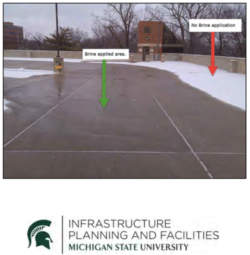
The Infrastructure Planning & Facilities Landscape Services Department (IPF) is in charge of maintaining all campus sidewalks, roads, parking lots, and parking ramps on campus. For years, Landscape Services has used a salt brine mixture made by MSU and “Liquid Snow Shovel” (a commercial solution bought from a company) as a pre-treatment for sidewalks and roadways to lower the usage of salt and keep snow and ice from adhering to the surface. However, IPF is facing several problems when dealing with lower pavement temperature and high costs for de-icing materials.
The first problem was the freezing point. When pavement temperatures get colder than 15°F, the brine mixture is less effective, causing IPF to apply more salt to campus hard surfaces. The second problem was corrosion due to the brine mixture and salt application. The main component of the brine mixture is rock salt, which deteriorates campus infrastructure and causes high maintenance cost to maintain equipment due to corrosion. A product that is available on the market called “Liquid Snow Shovel” has a lower freezing point and less corrosive effects than the brine mixture, but it caused the third problem, which was a high unit price of $2/gallon, while the brine solution made in-house costs $0.06/gallon. The project sponsor (IPF) required our team to find a new solution, which fulfilled the following requirements: freezing point less than 15°F and unit price less than $1/gallon. The success of this project would decrease the cost of winter maintenance and reduce the negative environmental impacts of salt. The project was successful.
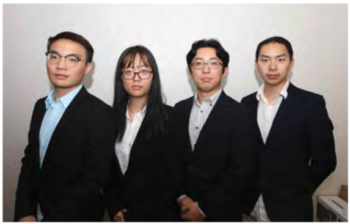
Swagelok: Universal Cylinder Clamp
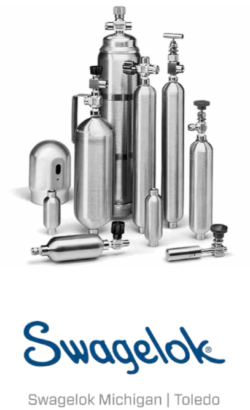
Swagelok, a global company with headquarters in Solon, Ohio, is a well-known supplier of fluid systems components, that include fittings, valves, hoses, tubing, regulators, and cylinders. This diverse product lineup allows Swagelok to supply its customers with everything needed to establish a fluid process setup. Swagelok has over 200 sales and service centers in 70 countries. The company’s mission is to push the boundaries of what is possible. They are always looking for a better way to improve customer experience through innovation and improvement of their products. It is this drive for innovation that has led Swagelok to seek improvements for their cylinder clamp mechanism. Cylinders are often mounted as part of a closed-loop sampling system that is used in facilities for operators to safely sample fluids.
Our team has designed a universal cylinder clamping solution capable of effectively mounting cylinders of various dimensions. This design supports cylinders with a base weight of up to 20 pounds and a significantly higher total weight when filled with process fluids. This design allows for ease-of-use in inserting and removing cylinders from the process area, while ensuring the safety of both the operator and the cylinder itself by providing support so that the operator does not drop the cylinder and cause harm. The clamp maintains functionality for operating temperatures of up to 300 degrees Fahrenheit.

MSU Recycling Center: Food Waste Cart Coating
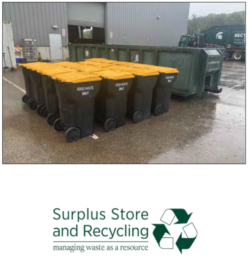
Every day food waste is produced in large quantities across the Michigan State University campus. In order to reduce the University’s carbon footprint, food waste is collected in order to be composted. The cleaning process of food waste containers occurs at the MSU Recycling Center. Bins are raised individually by a mechanical lift that angles the food waste bin into a large food waste dumpster. The bin is angled so that food can fall out into the dumpster, but this is not sufficient to rid the bins of food waste. A heated power washer is used to remove any remaining food waste and simultaneously clean the bins for reuse. It typically takes at least 5 minutes to completely clean a single bin.
Our team focused on evaluating the current process to research and recommend solutions to reduce the time spent on washing food waste bins. Various non-stick coatings were tested to see if they performed well with food waste on the HDPE containers. The success and implementation of the methods suggested should have an impact on the washing time of the bins and thus lower the cost of the cleaning process.

MSU Department of Mechanical Engineering: Dynamometer for Electric Bicycle
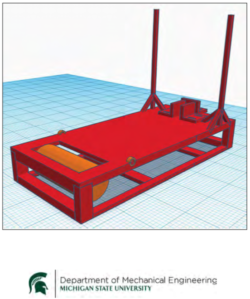
The Michigan State University Department of Mechanical Engineering works on a wide variety of research projects. One of these projects focused on an electric bicycle and the method in which it is powered. An electric bicycle has two potential power sources: a human operator and a motor. System controls and sensing strategies for the electric bicycle, as well as motor controls evaluation were required to ensure that the two power sources were able to interact smoothly over varying operating conditions.
Our team was tasked with creating a dynamometer to test the power output of the electric bicycle. The dynamometer works by attaching the power outputs of the bike to a measurement system, which is able to find the power of the bicycle. This can be through the rear wheel, as the motor of an electric bicycle and the pedaling both translate torque into the rear wheel. This is then connected to an electric motor, which can incur resistance to the wheel at varying amounts. The dynamometer was designed to operate with multiple simulated conditions (inclines and speeds) as well as varying masses of riders and electric bikes. The varying amounts of resistance can simulate these conditions. The goal of this design is to safely secure a wide range of electric bikes onto the device and for the system to operate under three power conditions: the motor alone, the rider pedaling with no motor assistance, and the rider pedaling with motor assistance.
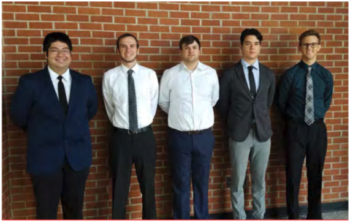
MSU Adaptive Sports & Recreation Club: Sled Hockey Transfer Platform

The MSU Adaptive Sports & Recreation Club is a Registered Student Organization that was established in 2014 as a free program that is open to athletes with physical disabilities, able-bodied volunteers, and academic projects personnel, who are MSU students, employees, alumni, and members of the Greater Lansing community. The program seeks to create and cultivate a physically and socially acceptable space where athletes with physical disabilities and able-bodied volunteers come together to establish an integrated community of peers. The program uses sports to validate the disability experience by eradicating inaccurate societal stereotypes and invalid self-perceptions about disability, while promoting physical and personal health goals. The program adopts a self-determination approach that focuses on athlete autonomy, competence, and relatedness as key facilitators in the process of acquiring self-efficacy in the area of sports and physical activity; skills that can be transferred to other life domains.
Our team focused on designing a sled hockey transfer platform that increases player safety and independence during transfer to/from personal assistance mobility equipment (e.g., wheelchair, walker, etc.) to a roller hockey sled. The design needed to be mobile, portable, compact, and most importantly, universal, to accommodate a wide range of users presenting various levels of physical function.
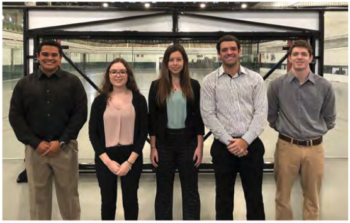
Michigan AgrAbility: Shop Door Hoist

Michigan AgrAbility is an organization that aims to improve the quality of life of agricultural workers with disabilities. AgrAbility does this is by developing innovative products that provide the assistance needed to accomplish daily work.
To that end, our team was focused on designing and manufacturing an inexpensive shop door hoist that reduces the lifting weight of overhead doors for farmers with physical limitations. The door opener consists of a pulley and bracket system powered by an electric cable winch. The manufacturing cost of this solution is low, providing an excellent alternative to expensive commercial door openers.
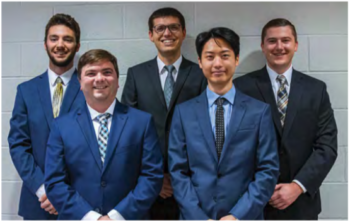
ArcelorMittal: In-Line Oil Measuring Device

ArcelorMittal is the world’s leading integrated steel and mining company – present in 60 countries with an industrial footprint in 18 countries. Melted down iron ore pellets are cast into sheets and rolled into coils (pictured to the right) that can weigh between 50,000 and 80,000 pounds each. The steel coils are moved down a “pickle” line where oil is applied to prevent rust. Different amounts of oil are needed depending on the customer specifications. Currently, the process is monitored and controlled by a single person, causing issues with accurately identifying the amount of oil being applied on the pickle line at any given time.
Our team has been given the opportunity to create a more efficient and automated method for identifying the amount of oil being applied. We have been asked to provide a quote for an oil measuring device as well as to design an ergonomic mount for the device that will allow the device to be easily removed from the line and worked on. The successful completion and implementation of our team’s design solution has a yearly cost-saving potential of >$1M.

CANVAS SOAR – AutoDrive Challenge: Autonomous Vehicle Sensor Integration
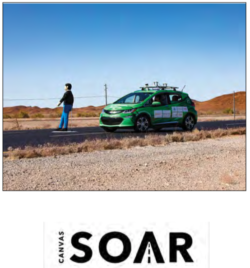
In 2017 the Society for Automotive Engineering (SAE), in partnership with General Motors, announced the AutoDrive Challenge. Eight universities were invited to compete in a three-year cycle of design, creation, and test- based competition of an autonomous vehicle. MSU was one of the eight invited schools. Each school was provided a Chevy Bolt and tasked with making it SAE Standard Level 4 Autonomous by the end of year 3. This will include navigating through urban driving scenarios and properly dealing with dynamic and static objects, as well as recognition of traffic control lights and signs. The MSU AutoDrive effort is coordinated through a student organization housed in the College of Engineering and consists of three main sub-teams: Mechanical, Software, and Electrical.
As a part of the Mechanical sub-team, we were tasked with designing weatherproof enclosures and thermal resistant mounts that are capable of resisting everyday environmental hazards such as bumps, debris, acceleration, and various weather conditions. Our sensor housing consists of one camera and one radar on each side of the car mounted between the side mirror and the front tires. It also has three radars built into the front fascia of the vehicle, and one camera centered there. The final design effectively provided dependable mounting to the vehicle with minimal vibrational impact considering the system’s operations and any automotive environment. Additionally, weather resistant material was used and a cooling system was integrated for the sensors due to high ambient operating temperature conditions.
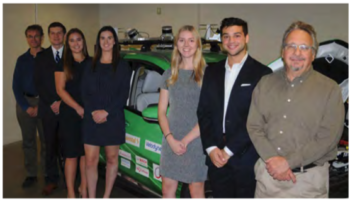
ME Faculty Advisor: Dr. Thomas Pence
MSU IPF Landscape Services: Autonomous Mowing and Snow Removal
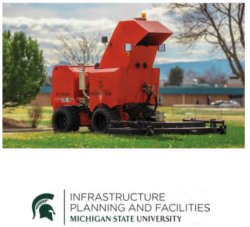
Michigan State University Infrastructure Planning and Facilities Landscape Services Department is responsible for many services. Of these services, lawn mowing and snow removal take up a considerable amount of time and money. Landscape Services mows 1500 acres of greenspace in the warm months and, during the winter, is responsible for maintaining 57 lane miles of roadways, 220 acres of parking lots, 113 miles of sidewalks and seven parking garages. To assist in maintaining these spaces all year round, MSU IPF purchased the first SnowBot Pro in January 2019. The autonomous vehicle from Left Hand Robotics, Inc. has the ability to perform snow removal and lawn mowing.
Our team was tasked with taking the necessary steps to ensure the safety and reliability of the SnowBot Pro on campus. With its 63-inch mowing deck, the robot mows three acres per hour. Although this is slower than human operators, it allows Landscape Services employees to spend more time on non-trivial tasks such as fertilizing. In the winter, the SnowBot Pro is equipped with a salter and broom that can clear sidewalks 14 times faster than a human. The GPS-guided robot uses radar and lidar sensors to detect nearby objects and react accordingly. Our team was challenged with creating a functional safety plan to establish success criteria that was sent to Risk Management for approval before the robot’s deployment on campus. With multiple scenarios, objects, and conditions, a testing plan was created and executed to statistically evaluate the safety of the robot.

Whirlpool Corporation: Self-Cleaning Dryer Water Pump Test Stand
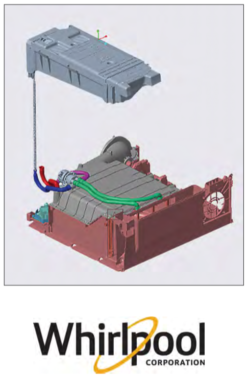
Founded in Benton Harbor, Michigan, Whirlpool Corporation has a century-long history of designing and manufacturing household appliances. Starting in 1911 with a wringer washing machine, the company has expanded its product portfolio to include dryers, dishwashers, ranges, and a myriad of other products sold under its own name, as well as under brands like Maytag, KitchenAid, and Jenn-Air.
Our project was to design and implement a testing stand for the self-cleaning filter system in a heat pump dryer. This test stand was then used to collect data to aid Whirlpool in assessing the robustness of the system’s water pump to lint ingestion. Stretch goals were also set and included the optimization of critical pump components, such as the impeller, pump cover, priming holes, and bearings, in order to further increase their robustness to lint ingestion. The knowledge gained from this project is being used by Whirlpool to improve the quality of its self-cleaning filter subsystems, which will provide its customers with more positive experiences with their energy efficient appliances.
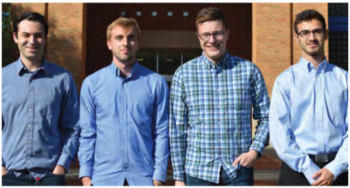
Flash Steelworks, Inc.: Flash Processing Rotational Fixture
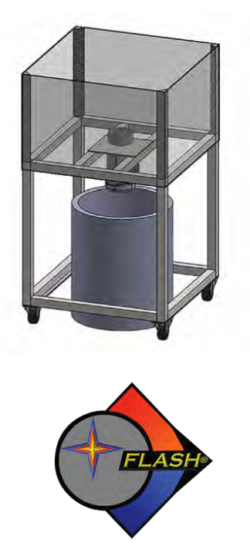
Flash Steelworks is a R&D firm specializing in the development of advanced high strength steel. The company was founded by CTO Gary Cola and is known for its patented Flash Bainite ultra-fast heat treating process, which is proven to produce the highest performing steel on the market. Their extremely lightweight and high yielding steel is currently being applied to a select few industries: transportation, military applications, and infrastructure. Their Flash product allows engineers to design vehicle components, armor plating, and building components with steel that is stronger, thinner, lighter, more weldable, and less expensive than the competing top steel manufacturers.
Flash Steelworks presented a project that consists of designing and manufacturing a test apparatus capable of fixturing, rotating, and water-spraying a radially symmetric piece of steel. Flash Steelworks intends to use this test fixture for steel automotive rims, bowls, helmets, and other similar geometries. The prototype was designed to rotate a mass of no more than five pounds at 360 RPM. Due to safety concerns and the cost of induction heating equipment, our team took the results of this project and implemented the electric induction component on its own.
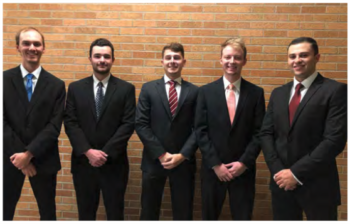
Consumers Energy: Modular Gas Lower Explosive Limit Sensor Array

The Gas Asset Management team of Consumers Energy works to provide natural gas to 1.8 million customers throughout Michigan’s Lower Peninsula. Their network includes numerous stations and nearly 30,000 miles of pipelines. Public and employee safety is the foundation of Consumers Energy, which delivers 356 billion cubic feet of gas annually. To ensure proper transport, monitoring equipment is used to test and measure gas concentrations.
While Consumers Energy can readily test gas concentrations at their stations, it does not yet have a portable solution for multi-point simultaneous testing. Our team’s project was to design, build, and assemble a prototype that could provide a 15-foot tall mobile vertical support for three lower explosive limit (LEL) sensors. These LEL sensors can measure combustible concentrations by analyzing plumes of gas using infrared detection sensors. To power the sensors, we used a junction box mounted on the base of the stand that connects to a data acquisition system. Additional requirements ensured that the array could withstand wind speeds of up to 30 mph and could be assembled in 30 minutes or less. Outside of functionality, the largest concerns were sturdiness, ease of assembly, cost, and disassembled size.
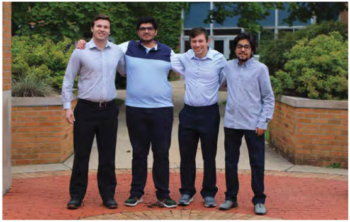
Ford Motor Company: Parasitic Loss Test Data Processing

Ford Motor Company, with headquarters in Dearborn, Michigan, is a global leader in passenger and commercial vehicle design and production. Parasitic Loss testing is conducted at the Allen Park Test Lab, in Allen Park, Michigan. Parasitic Loss testing determines the frictional losses in the drivetrain system. The drivetrain friction is added to other vehicle losses to determine the total road load of the vehicle, which is required in order to test the vehicle on a dynamometer to prove it meets emission and fuel economy standards.
The focus of this project was to create a software program with a flexible, user-friendly interface to analyze the relationships between temperature, wheel speed, and wheel torque during a test that simulates the SAE J2263 coast-down test on a dynamometer. This program was to be flexible enough to tolerate different indices of varying torque, speed, and temperature inputs and different lengths of coast-down times. Various software already available to Ford were investigated as possibilities to achieve the project goals. After selecting a software, our team spent time learning the coding language of the software and then determined the best way to utilize the software capabilities to process the data. The developed program is capable of organizing raw data from multiple test runs into a tabular output format, providing a flexible graph of compiled data, and fitting a polynomial to the data.
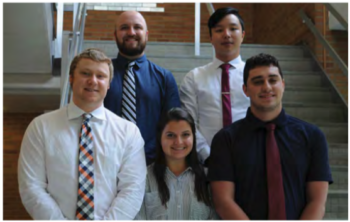
Kautex Textron

Kautex, a Textron Company, is one of the 100 largest automotive suppliers in the world in terms of sales volume. Kautex is a world-renowned company with more than 30 facilities in 14 countries. Kautex develops and produces blow-molded fuel systems, selective catalytic reduction systems, clear vision systems, engine camshafts, and plastic industrial packaging solutions.
Our team was asked to create the kinematics of the machines Kautex uses on their assembly production lines in several facilities. The CATIA 3D models, given by Kautex, are used to show static plant layouts and production flow simulations. We looked to improve these plant layouts and production flow simulations by bringing kinematic design to the existing 3D models of machines.

MSU MTRAC: Non-Clogging Fungal Filter for Harvesting Microalgae
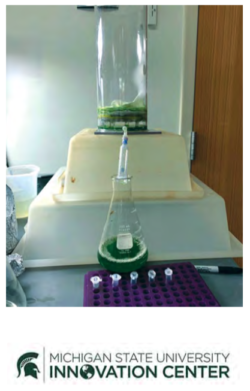
The MSU MTRAC program takes research done in a laboratory and translates that research into commercial products through licensing and startups. Dr. Du and Dr. Bonito’s research with using fungi to harvest microalgae is funded by the MSU MTRAC program. Dr. Du and Dr. Bonito have found that mortierella fungi can form dense biofilms and they can grow to the size and shape of their incubation chambers. These fungi can be stacked in an apparatus that resembles a French press, and with a combination of inexpensive yet safe materials, forms a prototype fungal filter system that harvests microalgae.
Our team was asked to take the current prototype and improve the design, manufacturing process, cost, and size of the product while maintaining performance of the filter system. We focused on turning the prototype design from the French press model to a pod filter system design in order to allow for continual and practical use. This filter will be able to separate the algae from the water so that the algae can be collected. Additionally, this filter can be grown and molded to many sizes and shapes using different 3D printed molds in which the fungi can be incubated. The improved prototype will then be used and advertised to harvest microalgae on a more commercial scale.
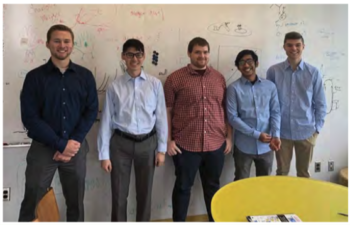
MSU Department of Theatre: Fitting Stand

MSU’s Department of Theatre fosters a courageous, self-driven creative process to create a pathway for success. The theatre department puts on multiple plays a year and, in doing so, requires multiple hours of work from its costumer and machine shop. One of the problems that arises from the multitude of plays is the stress put on the costumer who is constantly trying to make and fit costumes for the actors. There is a constant motion to get on his or her hands and knees due to working on the bottom of the costume while trying to pin a hem or make adjustments. It is not safe to have actors stand on a chair or stool because they could fall and injure themselves.
Our team has been asked to create a device that allows the costumer to raise the actor safely while he/she works on fitting the dress to the actor. This allows the costumer to work at a more ergonomic height and reduce the strain put on their knees and back. With the 3’ x 3’ platform on top of the fitting stand, it is now safe to raise the actor and the risk of falling due to unstable surfaces has been reduced. An added feature of this fitting stand, is a turntable top. This rotating platform allows the costumer to stay in one location and turn the actor around when needed. This helps decrease the time it takes for the costumer to work on the costume because he/ she can now stay in one location and not have to continuously move around the actor. This new fitting stand ensures a more comfortable and safer work environment for the costumer and actors.
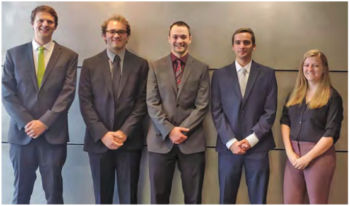
MSU Department of Theatre: Honeycomb Deck Testing

MSU’s Department of Theatre performs a variety of Broadway style plays and musicals offered on the two stages at the Wharton Center. The smaller of the two stages, the Pasant stage, seats about 580 people, which offers a more intimate experience for the audience. When it is time for a new performance, the Theatre Department must lay a newly painted floor over the stage to restyle it for the next performance. Unfortunately for the Theatre Department these pieces of stage can weigh around 100 pounds, which can be difficult for some in the department to handle. To solve this problem, the MSU Theatre Department decided they would incorporate a honeycomb style design into their plywood stage. The current stage consists of two pieces of 1⁄2’’ plywood glued and stapled together, with the bottom half containing the honeycomb pattern. Changing the stage to this pattern reduced the weight of the stage pieces by around 30%.
Our team has been asked to create different potential load cases that this honeycomb style stage could encounter and test whether this lighter stage can handle these potential loads. We tested different static and dynamic loads. The maximum load that this stage would be expected to hold is around 1500 lbs. in addition to a large groups of performers. We were also asked to find other potential means of supporting the stage pieces. The stage is currently supported by knee walls that are layered 2 feet apart in both directions with some vertical supports.
